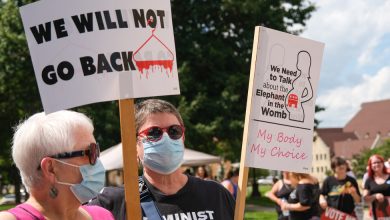The Health Moonshot Biden Can Campaign On

I began my public health career more than 20 years ago, at a time when H.I.V. was ravaging many countries around the world. The U.S. government’s strategic response to attack this cruel disease abroad was PEPFAR, an American initiative that has saved more than 25 million lives and shaped my understanding of what muscular public health policy could accomplish.
Today, as New York City’s health commissioner and a practicing doctor, I see a desperate need for similar focus and ambition here in the United States. The major health crisis we’re facing is not Covid or a single epidemic. It’s not cancer, diabetes or drug overdoses alone. It is the national emergency of worsened life expectancy in America. Combating our falling life spans could be a unifying focus of a second Biden administration, since it will take all of the government along with other sectors, working in alignment and investing at scale, to set our nation out on a path for longer, healthier lives.
Since World War II, no single period has taken more years off our collective lives than the three years from 2019 to 2021, following nearly a decade of flattening. While Covid was a factor, it was far from the only one. Countries of similar economic strength suffered less drastic drops in life span, and they have mostly regained the ground they lost during Covid. Because of chronic diseases like diabetes and heart disease — along with drug overdoses, suicide, violence — the United States has not. Some groups, such as Black Americans, have suffered even larger declines. Those without bachelor degrees have lost more years than their college-educated peers.
To reverse these trends, America should commit resources to a coordinated industrial policy for health. Industrial policy calls for government action and private markets to function together to achieve a shared goal in the face of a complex challenge. When the country needed transcontinental railroads in the 19th century, we built them through coordinated action led by the federal government. When developing countries needed H.I.V. medications, we created a mechanism for companies to produce them cheaply while building the health systems to deliver them to patients in need. When the world needed a Covid-19 vaccine, we combined government-funded research with private initiative and an enormous distribution campaign.
What would it look like, then, if we devoted ourselves to solving the problem of our decreased life spans?
First, we would have to break our addiction to clinical care designed to react to new ailments, and spend more on preventing health issues in the first place. The United States spends lavishly on clinical care, doling out $4.5 trillion — more than 17 percent of our gross domestic product — in 2022 alone. Prevention accounts for less than 3 percent of our overall health spending. That ratio buys us some of the poorest health outcomes and shortest life expectancies in the developed world.





